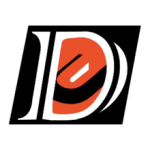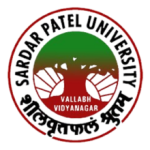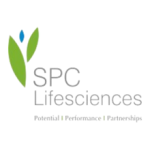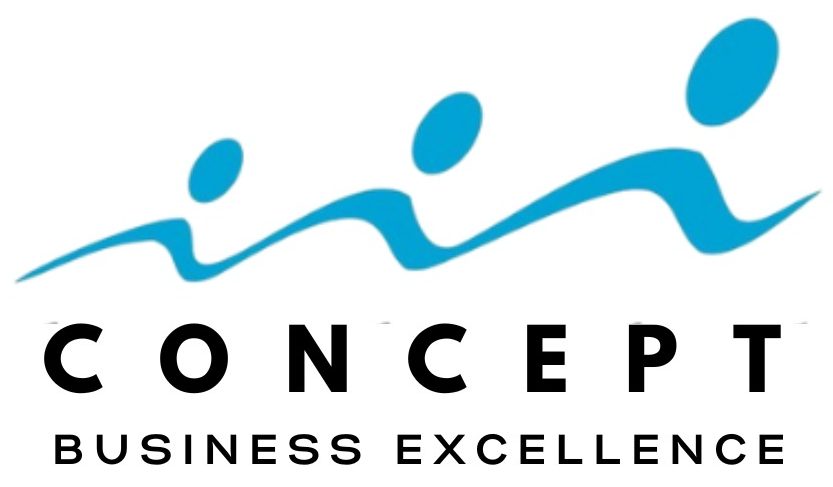Quality Productivity Improvement Training





























































Statistical Process Control (SPC) – Basic
Statistical Process Control (SPC) – Basic is a foundational program focused on teaching participants the essential statistical methods used for quality control in manufacturing and other processes. SPC involves monitoring and controlling processes to ensure they operate at their full potential, minimizing waste and maximizing output. This course introduces key concepts and techniques for measuring and analyzing process outputs to maintain consistent quality. SPC is applicable to any process where the output can be quantified, making it a versatile tool for achieving high-quality standards across industries.
Benefits of SPC – Basic
- Improved Process Control: Learn how to monitor and control processes using statistical methods, ensuring consistent and high-quality output.
- Waste Reduction: Understand how to identify and eliminate variations in the process, leading to reduced waste and increased efficiency.
- Enhanced Quality Assurance: Gain the skills to detect process issues early, allowing for timely corrective actions that prevent defects.
- Data-Driven Decision Making: Develop the ability to use statistical data to make informed decisions about process improvements and optimizations.
- Versatile Application: Apply SPC techniques to a wide range of processes, making it an essential tool for industries that require precision and consistency in production.
-
What is Statistical Process Control (SPC) – Advance?Statistical Process Control (SPC) – Advance is an in-depth program designed as a follow-up to the SPC-Basic course. This advanced course expands on the fundamental principles of SPC by introducing new tools and methods for monitoring and controlling processes. Participants will learn advanced techniques for analyzing process variability, implementing more sophisticated control methods, and improving process performance. This program is ideal for individuals who already have a basic understanding of SPC and are looking to enhance their skills in quality control and process optimization.
-
Benefits of SPC – Advance
- Advanced Process Monitoring: Learn new statistical tools and methods for monitoring and controlling processes more effectively.
- Increased Accuracy: Gain the ability to detect subtle variations in the process, leading to improved accuracy and higher quality output.
- Enhanced Problem-Solving: Develop advanced skills to identify and solve complex process issues, preventing defects and improving efficiency.
- Data Analysis Expertise: Expand your capability to analyze statistical data, enabling more precise control over process variables.
- Continuous Improvement: Apply advanced SPC techniques to drive continuous improvements in process performance and product quality.
-
What is Problem Solving Techniques – 7 QC Tools?The Problem Solving Techniques – 7 QC Tools program is designed around the Plan-Do-Check-Act (PDCA) model, a proven problem-solving framework. The 7 QC Tools, which are simple yet powerful methods for quality control and problem-solving, are applied at various stages of the PDCA cycle. Developed by Japanese Quality Guru, Mr. Kaoru Ishikawa, these tools have been effective in solving more than 95% of problems in organizations. The 7 QC Tools simplify statistical analysis, making it accessible to all, while providing visual aids for easier comprehension. They are essential for collecting, analyzing data, identifying root causes, and measuring results to develop and implement effective solutions.
-
Benefits of Problem Solving Techniques – 7 QC Tools
- Effective Problem-Solving: Learn to apply the 7 QC Tools within the PDCA cycle for structured and systematic problem-solving.
- Root Cause Analysis: Gain the ability to identify and address the root causes of issues using simple yet impactful tools.
- Data-Driven Decisions: Understand how to collect and analyze data effectively to drive informed decision-making.
- Simplified Statistical Analysis: Utilize tools that make statistical quality control more approachable for individuals without advanced statistical training.
- Improved Process Efficiency: Apply the 7 QC Tools to improve processes, reduce errors, and enhance operational performance.
- Real-World Application: Implement practical techniques that have been proven successful in organizations worldwide, particularly in solving everyday challenges.
-
What is Measurement System Analysis (MSA)?Measurement System Analysis (MSA) is a critical tool used to evaluate the accuracy and reliability of measurement systems in any quality management process. The program focuses on identifying and minimizing variations in the measurement system, ensuring that measurement errors do not distort the results of process evaluations. Every process produces some variation, and MSA helps distinguish between variations caused by the process itself and those introduced by the measurement system. By conducting MSA, organizations can improve the precision of their measurements, leading to more consistent and high-quality products. It is an essential tool in Six Sigma and other quality management systems.
-
Benefits of Measurement System Analysis (MSA)
- Improved Measurement Accuracy: Identify and reduce errors in the measurement system to achieve more precise and reliable measurements.
- Variation Analysis: Understand the sources of variation in both the measurement system and the process to control and minimize inconsistencies.
- Enhanced Product Quality: Reduce part-to-part variation, leading to a more consistent and higher-quality product.
Data Integrity: Ensure that the data collected is trustworthy, enabling better decision-making and process improvements. - Key Six Sigma Tool: Leverage MSA as part of the broader Six Sigma framework to enhance process efficiency and performance.
-
What is Failure Mode & Effect Analysis (FMEA)?Failure Mode & Effect Analysis (FMEA) is a systematic tool used to assess potential failures within a product, process, or system. It identifies and prioritizes risks, enabling organizations to take proactive steps to mitigate those risks before they impact performance or quality. FMEA typically involves a detailed brainstorming process, following a Cause and Effect Analysis or Process Mapping, and often includes a Pareto Analysis to focus on the most significant issues. Conducted by a cross-functional team with expertise in the area being analyzed, FMEA ensures that all possible failure modes are identified and addressed, enhancing reliability and performance.
-
Benefits of Failure Mode & Effect Analysis (FMEA)
- Risk Identification: Discover potential failure points in a process or product design early on, reducing the likelihood of defects.
- Prioritized Risk Management: Evaluate risks by severity, occurrence, and detection to prioritize the most critical issues for remediation.
- Cross-Functional Collaboration: Foster collaboration among stakeholders with diverse knowledge to ensure comprehensive risk assessment.
- Proactive Problem Solving: Develop action plans to address identified risks before they result in operational or quality issues.
- Improved Product and Process Reliability: Enhance the reliability of processes and products by eliminating or mitigating potential failure modes.
-
What is Design of Experiments (DOE) – Basic?The Design of Experiments (DOE) – Basic program introduces participants to a structured statistical approach aimed at optimizing product or process performance. DOE allows for significant process improvements with a minimal number of experimental runs, making it an efficient method for understanding the impact of multiple factors on outcomes. By using DOE, participants will learn how to systematically plan and execute experiments that provide valuable insights into process variations and help in making data-driven decisions for improvement
-
Benefits of DOE – Basic
- Process Optimization: Learn how to improve processes and product performance through structured experimentation.
- Efficient Data Collection: Gain the ability to make informed decisions with a small number of experimental runs, minimizing time and resources.
- Statistical Analysis: Understand the statistical methods involved in analyzing experimental data to identify key factors impacting performance.
- Increased Product Quality: Apply DOE techniques to enhance the quality of products by identifying optimal process parameters.
- Actionable Insights: Develop skills in interpreting experimental results to drive continuous improvement in production and operations.
-
What is Design of Experiments (DOE) – Advance?The Design of Experiments (DOE) – Advance program expands on the basic principles of DOE, diving deeper into powerful statistical methods that aid in improving product performance and developing efficient processes. This course is designed for professionals looking to solve complex manufacturing problems, achieve breakthrough innovations, and optimize processes. By using advanced DOE techniques, participants will learn how to meet process requirements at minimal costs while maximizing product quality and performance. This advanced course is essential for those involved in Six Sigma and other process improvement methodologies.
-
Benefits of DOE – Advance
- Advanced Process Optimization: Gain expertise in using advanced DOE methods to significantly enhance product and process performance.
- Efficient Problem Solving: Quickly identify and resolve complex manufacturing issues using robust experimental designs.
- Cost-Effective Solutions: Learn how to optimize processes to meet performance requirements with minimal costs.
- Enhanced Product Quality: Apply advanced DOE techniques to improve the overall quality and reliability of products.
- Six Sigma Alignment: Develop a deeper understanding of DOE as a critical tool in Six Sigma for achieving process excellence and continuous improvement.
-
What is Reliability Engineering?Reliability Engineering focuses on ensuring that components, equipment, or systems perform their intended functions consistently over a specified period, under given operating conditions. In today’s highly competitive environment, the reliability of equipment is critical for maintaining quality standards and meeting delivery deadlines. This is achieved through proper maintenance practices and design modifications for unreliable subsystems and components within complex systems. Reliability Engineering involves developing strategies for maintenance, replacement, and design changes, alongside analyzing downtime to pinpoint and improve unreliable elements.
-
Benefits of Reliability Engineering
- Enhanced Equipment Reliability: Improve the dependability of systems by identifying and addressing unreliable components.
- Minimized Downtime: Develop strategies to reduce downtime, leading to improved operational efficiency and meeting deadlines.
- Cost-Effective Maintenance: Implement optimized maintenance and replacement plans for key subsystems to reduce long-term operational costs.
- Improved Product Quality: Increase the overall quality of products by ensuring the consistent performance of critical components.
- Strategic Design Modifications: Use reliability analysis to drive design changes that enhance system robustness and longevity.
-
What is Root Cause Analysis?Root Cause Analysis (RCA) is a methodical approach for identifying the underlying causes of problems in a system, enabling organizations to implement effective solutions or preventive measures. This course combines lectures, hands-on practice, and role-playing to give participants a comprehensive understanding of how to investigate issues and uncover their root causes. By mastering RCA techniques, participants will be equipped to address and solve recurring problems, ensuring long-term improvements in performance and quality.
-
Benefits of Root Cause Analysis
- Systematic Problem Solving: Learn how to thoroughly analyze systems to identify the root causes of problems.
- Prevention and Resolution: Develop skills to not only solve current problems but also prevent their recurrence.
- Practical Techniques: Engage in real-world role-playing and practice to apply RCA in your organization.
- Enhanced Decision-Making: Improve decision-making by understanding the true sources of issues, leading to more effective solutions.
- Long-Term Improvement: Implement RCA methods to achieve sustained improvements in quality, efficiency, and performance.
Unlock Your Organization's Full Potential
This comprehensive evaluation covers every aspect of your business, from strategy to execution, revealing untapped potential and areas for improvement.
Unlock Your Organization's Full Potential
This comprehensive evaluation covers every aspect of your business, from strategy to execution, revealing untapped potential and areas for improvement.
Awards & Accreditation

Best Lean Consultant
National Productivity Council, Govt. of India

Best OpEx Training Consultant
Quality Mark Trust, India

Consultant of the year
The Story Magazine

Consultant of the year
The CEO Story

ASCB,USA
Training Accreditation for OpEx

LMI, USA
Licence Holder for Leadership training
 See Success Stories
See Success Stories
Join the Consulting and training Success Story – Be Our Next Satisfied Company.
0
+
Over 1500+ Success Stories: Hear From Our Satisfied Clients


Venkatamurugan N S
Head - DTI (India) & Operations (Glass, WGC) at Saint-Gobain India Private Limited - Glass Business
"Concept Consulting and Nital in particular have
provided good training and coaching on Lean
Manufacturing to our team of Engineers and
Technicians. Practical examples and altering the
methodology suiting to varied group was
effective.
Highly professional approach"

Shrikant Mehta
Quality Manager at ABB September 15, 2011, Shrikant was Nital's client
Nital is indeed one of a very few torch bearers of
Quality Management in today's business
scenario. Apart from his excellent subject
knowledge, he is always innovative in his ways
of performing a task - and that is what makes
him stand out from the crowd today. His thinking
is always futuristic. I feel proud to be associated
with a person like him as I am sure that when it
comes to success - there is no boundary for
Nital! I wish him all the very best today &
forever

Rajanikant Ghodasara
Head corporate Technology and Engineering Academy at Larsen And Toubro Limited, Powai May 11, 2021, Rajanikant was Nital's client
We worked with Mr. Nital Zaveri, he is passionate
and expert for six sigma and break through
business innovation. we took his service to
develop our more than 500 professionals as
Green Belt Six Sigma Champions through our
customized training programs and busines
projects. working experience with him and his
team is wonderful and effective to get business
outcome. We wish longterm association with
him ...Thanks a lot for development of innovative
culture.

Dev ARORA
A leader with a proven track record of successfully delivering manufacturing | And Certified IMS, Fire & Safety Lead Auditor | Ex - Plasser | G.E. | Alstom | E.C.I. | and BPL-Toshiba December 20, 2020, Dev was Nital's client
I am particularly impressed by Nital's knowledge
and his profession skill.
He has expertise in system
implementation,motivated and forward thinking
personality.
One great quality of Nital is great mentor and
have room for improvement.
 Get In Touch WITH US
Get In Touch WITH US
Contact us Today for Expert Training Guidance



